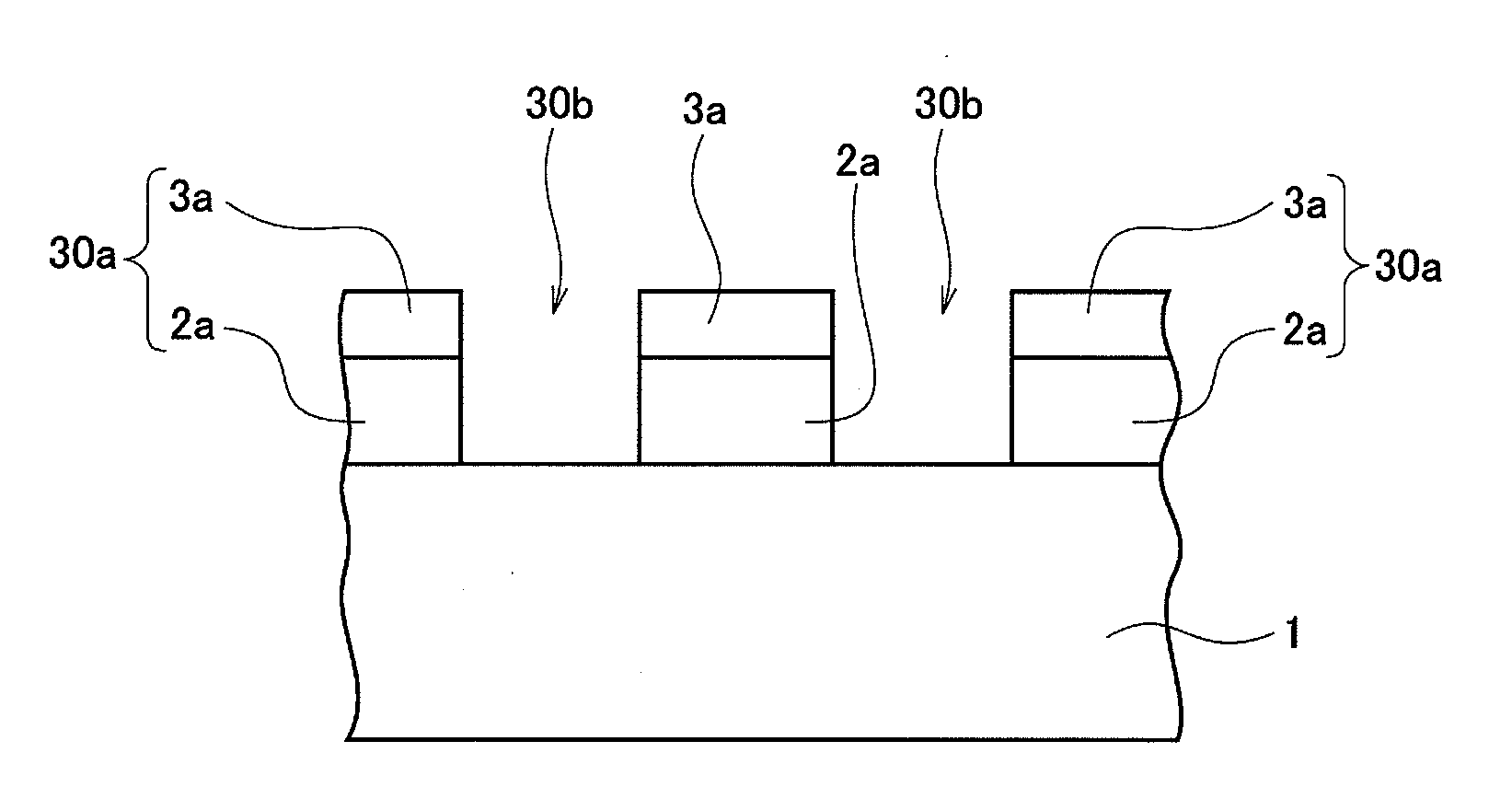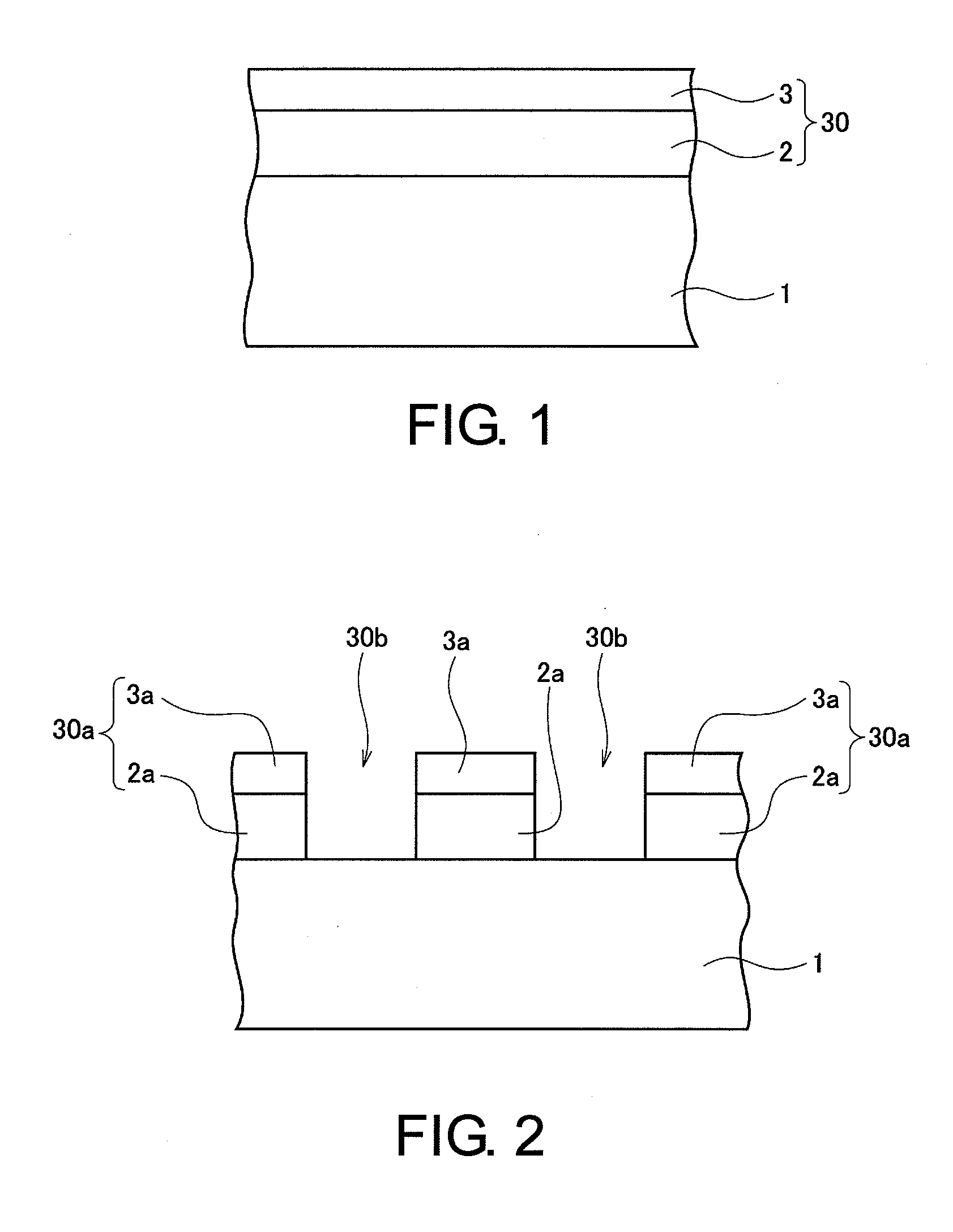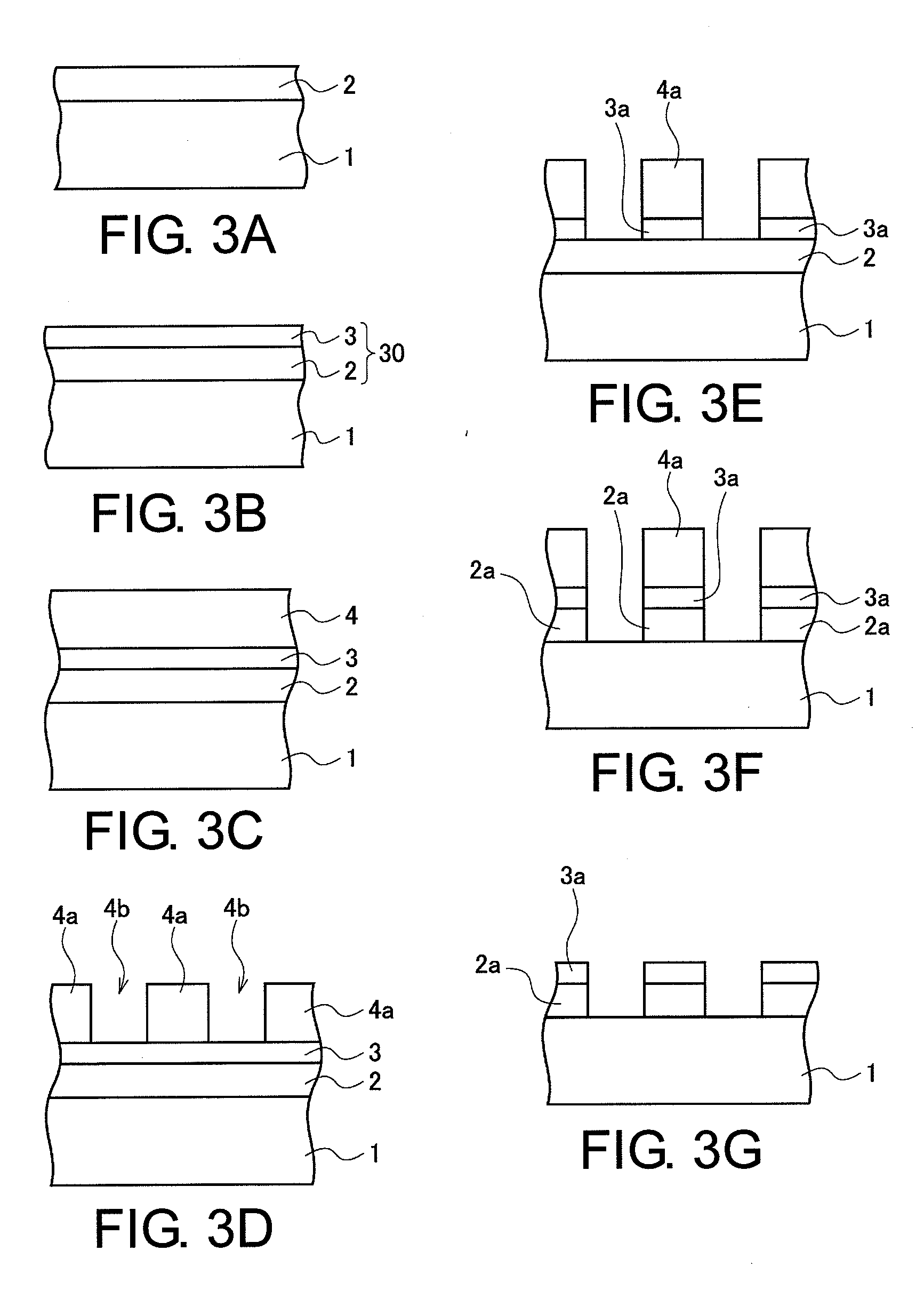Photomask blank, photomask, and methods of manufacturing the same
a technology of photomask and resist film, which is applied in the field of photomask blank, photomask and method of manufacturing the same, can solve the problems of difficult to completely suppress oxidation, adversely affecting optical properties, and inability to achieve substantial dry etching with chlorine-based gas, so as to achieve high light shielding properties and reduce the consumption of resist film during dry etching
- Summary
- Abstract
- Description
- Claims
- Application Information
AI Technical Summary
Benefits of technology
Problems solved by technology
Method used
Image
Examples
example 1
[0043]A substrate 1 made of synthetic quartz and having an about 152 mm×152 mm square size with a thickness of 6.35 mm was introduced into a DC magnetron sputtering apparatus. After the inside of the sputtering apparatus was evacuated to 2×10−5 (Pa) or less, a mixed gas (sputtering gas) of Xe and N2 was introduced into the sputtering apparatus. In this event, the flow rate of Xe and the flow rate of N2 were adjusted to 11 sccm and 15 sccm, respectively. Ta was used as a sputtering target. After the gas flow rates were stabilized, the power of a DC power supply was set to 1.5 kW, thereby forming a Ta nitride layer 2 having a thickness of 44.9 nm on the substrate 1 (see FIG. 3A).
[0044]Then, while the substrate 1 formed with the Ta nitride layer 2 was maintained in the sputtering apparatus, a mixed gas (sputtering gas) containing an Ar gas at a flow rate of 58 sccm and an O2 gas at a flow rate of 32.5 sccm was introduced into the sputtering apparatus and then the power of the DC power ...
example 2
[0062]FIG. 4 is a sectional view illustrating the structure of a photomask blank according to Example 2. As shown in FIG. 4, the photomask blank according to Example 2 is configured such that a Ta—B—N layer 21 having a thickness of 46.7 nm is formed as a light-shielding layer on a glass substrate 1 made of synthetic quartz and a Ta—B—O layer 31 having a thickness of 10 nm is formed as a front-surface antireflection layer on the Ta—B—N layer 21. The Ta—B—N layer 21 and the Ta—B—O layer 31 form a light-shielding film 33. Herein, the N content of the Ta—B—N layer 21 is 15 at % and the 0 content of the Ta—B—O layer 31 is 58 at %.
[0063]The photomask blank according to Example 2 is manufactured in the following manner: As in Example 1, a substrate 1 made of synthetic quartz and having an about 152 mm×152 mm square size with a thickness of 6.35 mm was introduced into a DC magnetron sputtering apparatus. After the inside of the sputtering apparatus was evacuated to 2×10−5 (Pa) or less, a mi...
example 3
[0070]FIG. 5 is a sectional view illustrating the structure of a reflective photomask blank according to Example 3. The reflective photomask blank is a photomask blank for fabricating a reflective photomask particularly for use in extreme ultraviolet (EUV) lithography using EUV light (wavelength: about 13 nm). The reflective photomask blank is formed by stacking a multilayer reflective film 11, an intermediate film 12, and an absorbent film (light-shielding film) 13 in this order on a substrate 10. The multilayer reflective film 11 is a film adapted to reflect EUV light with high reflectance and normally has a structure in which a material having a relatively high refractive index and a material having a relatively low refractive index are alternately layered in the order of several nm. As the multilayer reflective film 11, use is widely made of a Mo / Si cycle multilayer reflective film in which Mo and Si are alternately layered by approximately 40 cycles. As examples of other multil...
PUM
| Property | Measurement | Unit |
|---|---|---|
| Fraction | aaaaa | aaaaa |
| Fraction | aaaaa | aaaaa |
| Fraction | aaaaa | aaaaa |
Abstract
Description
Claims
Application Information
 Login to View More
Login to View More - R&D
- Intellectual Property
- Life Sciences
- Materials
- Tech Scout
- Unparalleled Data Quality
- Higher Quality Content
- 60% Fewer Hallucinations
Browse by: Latest US Patents, China's latest patents, Technical Efficacy Thesaurus, Application Domain, Technology Topic, Popular Technical Reports.
© 2025 PatSnap. All rights reserved.Legal|Privacy policy|Modern Slavery Act Transparency Statement|Sitemap|About US| Contact US: help@patsnap.com



